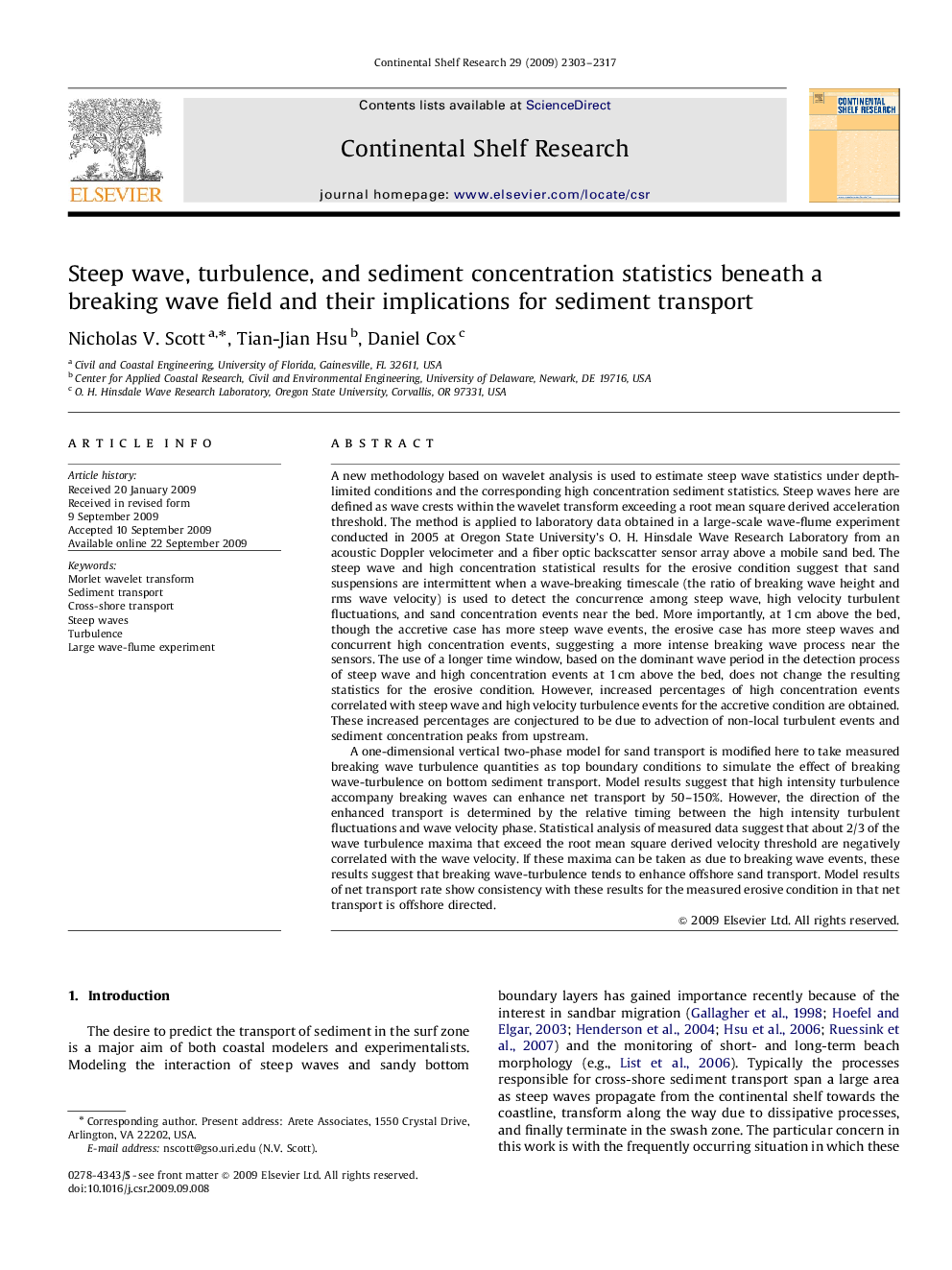| Article ID | Journal | Published Year | Pages | File Type |
|---|---|---|---|---|
| 4532983 | Continental Shelf Research | 2009 | 15 Pages |
A new methodology based on wavelet analysis is used to estimate steep wave statistics under depth-limited conditions and the corresponding high concentration sediment statistics. Steep waves here are defined as wave crests within the wavelet transform exceeding a root mean square derived acceleration threshold. The method is applied to laboratory data obtained in a large-scale wave-flume experiment conducted in 2005 at Oregon State University's O. H. Hinsdale Wave Research Laboratory from an acoustic Doppler velocimeter and a fiber optic backscatter sensor array above a mobile sand bed. The steep wave and high concentration statistical results for the erosive condition suggest that sand suspensions are intermittent when a wave-breaking timescale (the ratio of breaking wave height and rms wave velocity) is used to detect the concurrence among steep wave, high velocity turbulent fluctuations, and sand concentration events near the bed. More importantly, at 1 cm above the bed, though the accretive case has more steep wave events, the erosive case has more steep waves and concurrent high concentration events, suggesting a more intense breaking wave process near the sensors. The use of a longer time window, based on the dominant wave period in the detection process of steep wave and high concentration events at 1 cm above the bed, does not change the resulting statistics for the erosive condition. However, increased percentages of high concentration events correlated with steep wave and high velocity turbulence events for the accretive condition are obtained. These increased percentages are conjectured to be due to advection of non-local turbulent events and sediment concentration peaks from upstream.A one-dimensional vertical two-phase model for sand transport is modified here to take measured breaking wave turbulence quantities as top boundary conditions to simulate the effect of breaking wave-turbulence on bottom sediment transport. Model results suggest that high intensity turbulence accompany breaking waves can enhance net transport by 50–150%. However, the direction of the enhanced transport is determined by the relative timing between the high intensity turbulent fluctuations and wave velocity phase. Statistical analysis of measured data suggest that about 2/3 of the wave turbulence maxima that exceed the root mean square derived velocity threshold are negatively correlated with the wave velocity. If these maxima can be taken as due to breaking wave events, these results suggest that breaking wave-turbulence tends to enhance offshore sand transport. Model results of net transport rate show consistency with these results for the measured erosive condition in that net transport is offshore directed.
